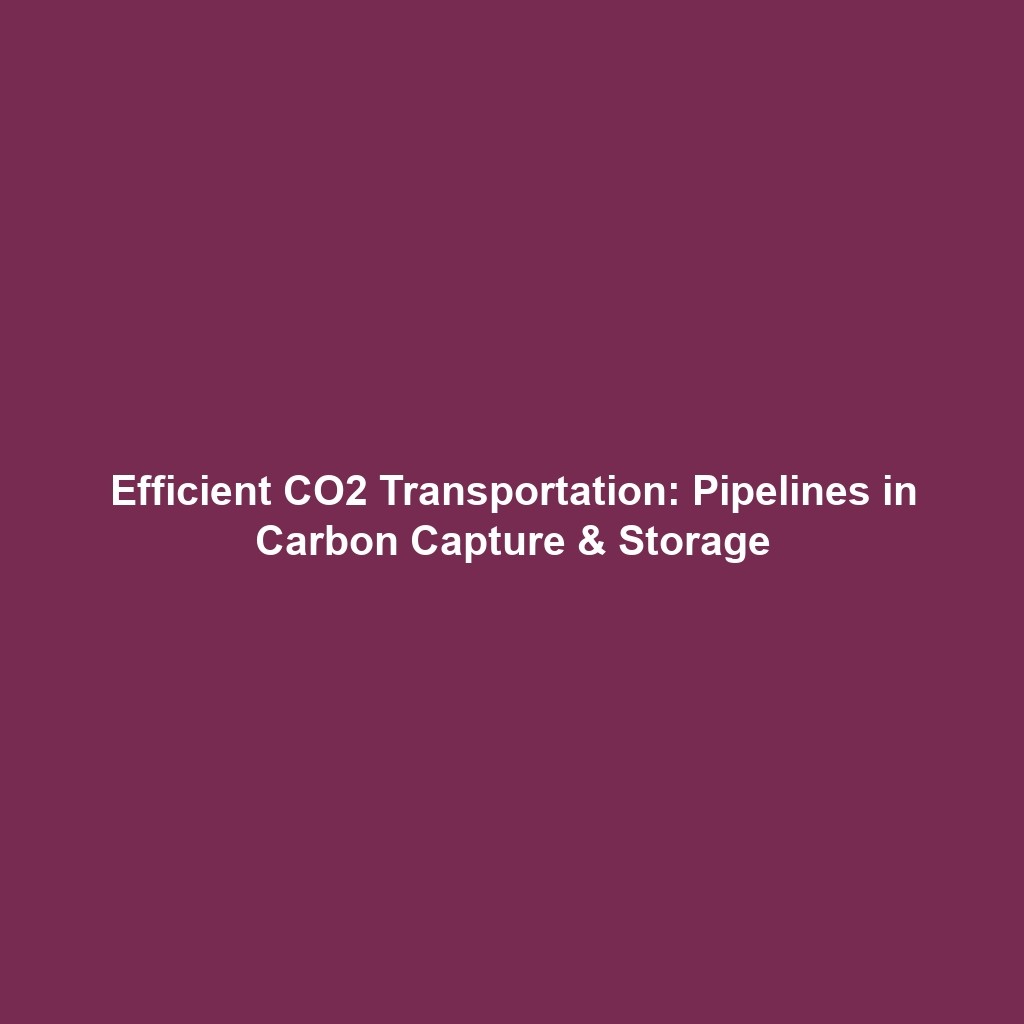CO2 Transportation via Pipelines in Carbon Capture & Storage (CCS)
Introduction
The transportation of carbon dioxide (CO2) via pipelines plays a critical role in the effectiveness of Carbon Capture & Storage (CCS) technologies. By capturing CO2 emissions from industrial sources and transporting them to secure storage sites or utilization points, we can significantly reduce greenhouse gas emissions. This process is crucial in combating climate change and transitioning to a more sustainable future. Understanding how CO2 is captured, transported, and stored not only enhances CCS strategies but also facilitates the development of cleaner technologies across various industries.
Key Concepts
The process of CO2 transportation through pipelines involves several key principles that are integral to the success of Carbon Capture & Storage (CCS):
Pipeline Infrastructure
Pipelines are specially designed to handle high-pressure transport of CO2. The infrastructure must ensure safety and minimize leakage, which is vital for environmental protection.
Compression and Injection
Before transportation, CO2 is often compressed to a liquid state, making it easier to transport over long distances. At the injection site, CO2 is placed into geological formations for secure storage.
Monitoring and Verification
Ongoing monitoring is essential to ensure that the CO2 remains stored safely over time. Technologies such as seismic surveys and satellite imaging are employed to track the integrity of storage sites.
Applications and Real-World Uses
The transportation of CO2 via pipelines is utilized in several practical applications within Carbon Capture & Storage (CCS):
- Enhanced Oil Recovery (EOR): CO2 is injected into oil reservoirs to increase extraction efficiency.
- Carbon Utilization: Reusing captured CO2 in industrial processes, such as producing carbonated beverages or in the manufacture of chemicals.
- Long-term Storage: Securing CO2 in geological formations, reducing its presence in the atmosphere.
Current Challenges
Despite its critical role in CCS, several challenges impede the efficiency and deployment of CO2 transportation through pipelines:
- Pipelines require significant initial investment and ongoing maintenance.
- Public perception and opposition can hinder project development.
- Regulatory uncertainties complicate the establishment of new pipeline infrastructure.
- Geological assessments are necessary to ensure safe long-term storage, which can be resource-intensive.
Future Research and Innovations
The future of CO2 transportation via pipelines in Carbon Capture & Storage (CCS) is promising, with ongoing research focusing on:
- Development of more efficient pumping technologies.
- Advanced materials for pipeline construction to reduce leakage risks.
- Innovative monitoring techniques utilizing AI and machine learning for real-time assessment.
Conclusion
The transportation of CO2 via pipelines stands as a fundamental component of the Carbon Capture & Storage (CCS) paradigm. Addressing the challenges associated with this process, coupled with upcoming innovations, is crucial for enhancing its efficacy. As global efforts intensify to combat climate change, advancing technologies in CO2 transport will be pivotal. For further reading on Carbon Capture & Storage methods, you can explore our article on carbon storage methods.
